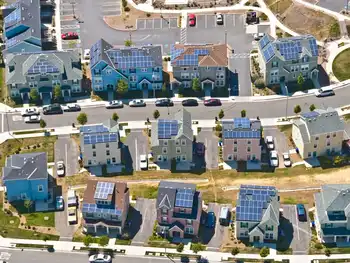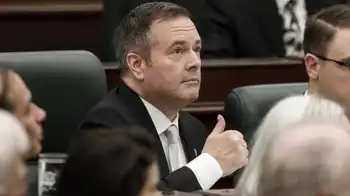ProvinceÂ’s green act empowers local utilities
It makes sense. Communities have their own differences and unique needs and a top-down approach doesn't always work. Give local utilities a little more say over the destinies of their own communities and there's a better chance, it's reasonable to assume, of reaching provincial green-energy and conservation goals.
That theory will soon be tested under the Ontario government's Green Energy Act. The proposed legislation gives local electric utilities the right, for the first time, to own and operate renewable energy facilities (as long as they don't exceed 10 megawatts), combined heat-and-power plants and energy storage facilities. They also get more control over conservation programs and a way to recoup all associated costs through rate increases.
"It gives us some of the tools we didn't have before," says David O'Brien, CEO of Toronto Hydro.
This is a big deal, particularly at a time when economic uncertainty has caused many projects to stall.
Municipal-owned utilities aren't stuck in the same kind of credit squeeze faced by private-sector developers and their cost of borrowing is much lower. Local utilities better understand the design and limitations of their own networks and the power needs of their communities. They're also less likely to bog down their own projects with red tape.
In Toronto, there's much talk about the need to build a third transmission line into the city to accommodate electricity demand and improve power reliability as the population grows. A few possible line routes have been thrown around, but the most controversial would be a corridor running through the east-end communities of Scarborough, Leaside and Riverdale.
Energy and Infrastructure Minister George Smitherman recently told the Star that empowering local utilities – in this case, Toronto Hydro – to aggressively pursue distributed-generation projects could achieve the same goals as building a third line.
He called the whole idea of a third line "really ugly politics" and labelled it a billion-dollar decision nobody wants to make. "But if you make a move into distributed generation you can address reliability, which is what the third line seeks to get at," he said.
And keep in mind that the Ontario Power Authority still has plans establish one more natural gas-fired power plant around Toronto, in addition to the one currently in the works in York Region and another being planned in the southwest GTA.
"I think if we demonstrate our progress, and demonstrate our seriousness, those are both examples of big expenditures that can be offset by a focus on bringing in more renewables,'' said Smitherman.
Sounds promising, except for one major snag: the transmission infrastructure connecting to central Toronto can't accommodate the flood of projects required to offset those big expenditures.
Specifically, the Leaside and Manby transformer stations pose a short-circuit risk if too much distributed generation is built downtown. In an optimistic scenario, 90 megawatts is the limit, but the likely limit is well below 50 megawatts. That amount of power capacity will not displace the need for a transmission line or a 300-megawatt gas plant.
So, are there any plans to upgrade these stations? It's not like we didn't see this coming. "The transmission system serving the city's core is aging with a large proportion of circuit breakers, underground cables and overhead circuits more than forty years old," Hydro One wrote in a July 2007 report.
In fall 2008, Toronto Hydro and the Ontario Power Authority began a joint study on the potential of distributed generation in central and downtown Toronto, as well as what it would take and cost to upgrade transmission to accommodate this power.
"We are looking at potentially trying to come up with a distributed generation plan that is fairly large scale," says Bing Young, director of transmission integration at the power authority. By large scale, he's talking about 300 megawatts.
"It's quite a significant engineering undertaking. Regardless of who the developer is – whether Toronto Hydro or some (private) project developer – the planning work still needs to be done."
The analysis won't be complete for a few weeks and a decision on what to do and how to do it likely won't happen until sometime in 2010. Groups like the Ontario Clean Air Alliance worry that the transmission constraints won't be fixed until 2011, earliest, which means Toronto Hydro will have to wait at least two years before exercising its new powers under the Green Energy Act.
"I think we've got to fast track some of this stuff," says O'Brien, who at the same time is sympathetic to the challenges that lie ahead for Hydro One.
But the city can only wait so long, he adds.
"The third line time frame is around 2014. It's not that far out. We may have a year or so to figure out what we're going to do on this thing. Can distributed generation and other measures replace the third line? We don't know yet."
Smitherman, for his part, says he'll soon be issuing a directive that Hydro One speed up transmission projects, including high-priority upgrades around Toronto. He wants the provincial utility to be a more proactive organization that acts with a sense of urgency. Good luck with that, some industry experts say.
"I hear you," says Smitherman. "Everybody has that instinct — there's these big hydro agencies and they've been around forever and they go about their own pace."
For those who doubt Smitherman will be able to change that culture, he replies: "Do me a small favour? Just watch me."
Oh, don't worry. We will.
Related News

Integrating AI Data Centers into Canada's Electricity Grids
CALGARY - Artificial intelligence (AI) is revolutionizing various sectors, driving demand for data centers that support AI applications. In Canada, this surge in data center development presents both economic opportunities and challenges for the electricity grid. Integrating AI-focused data centers into Canada's electricity infrastructure requires strategic planning to balance economic growth with sustainable energy practices.
Economic and Technological Incentives
Canada has been at the forefront of AI research for over three decades, establishing itself as a global leader in the field. The federal government has invested significantly in AI initiatives, with over $2 billion allocated in 2024 to maintain Canada's…





